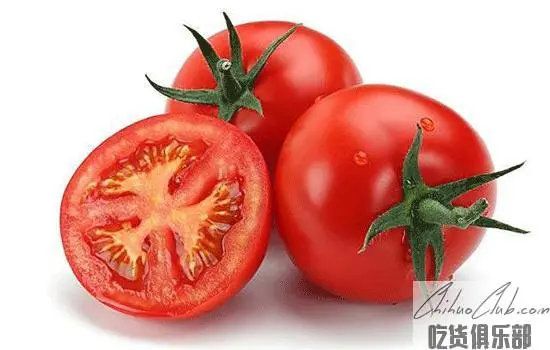
Donghai Tomatoes
-
Update date::
-
Date of protection::
-
Protected range:The origin of the East China Sea tomato is the administrative area of Donghai County, Lianyungang City, Jiangsu Province.
-
Related origin:jiangsu lianyungangshi donghaixian donghaixian-anfengzhen donghaixian-baitabuzhen donghaixian-fangshanzhen donghaixian-hongzhuangzhen donghaixian-huangchuanzhen donghaixian-jiangsudonghaigaoxinjishukaifaqu donghaixian-jiangsudonghaijingjikaifaqu donghaixian-linianxiang donghaixian-niushanjiedao donghaixian-pingmingzhen donghaixian-qinghuzhen donghaixian-quyangxiang donghaixian-shanzuokouxiang donghaixian-shihuxiang donghaixian-shilianghezhen donghaixian-shiliujiedao donghaixian-shuangdianzhen donghaixian-taolinzhen donghaixian-tuofengxiang donghaixian-wenquanzhen donghaixian-zhangwanxiang
-
Category:
Donghai County is a famous “vegetable base” in Jiangsu Province, in which the area planted with tomatoes is relatively large. "Donghai Tomato" is popular in the market because of its high vitamin C content, sweet taste, excellent quality, and storage and transportation. In recent years, Donghai County has adjusted its structure according to local conditions, docked the market and made a transformation, and vigorously supported the tomato industry to become bigger and stronger. At present, the county's tomato planting area is 60,000 mu, with an annual output of nearly 300,000 tons of tomatoes, and the annual output value exceeds 1 billion yuan, driving tens of thousands of farmers to increase their incomes and getting out of a unique agricultural structure supply side adjustment road.
Donghai County is a warm temperate humid monsoon climate. Donghai County is mild and humid all year round, with abundant sunshine, the same season of rain and heat, and four distinct seasons. The annual average sunshine hours is 2,300 hours, the annual average precipitation is 913 mm, and the annual frost-free period is 225 days. Suitable for tomato growth. [Quality characteristics] "Donghai Tomato" is popular in the market because of its high vitamin C content, sweet taste, excellent quality, and resistance to storage and transportation. [Taste] East China Sea tomatoes are sweet and sour, sweet and crisp, and fresh and delicious. [Eating method] Tomatoes can not only cook fried rice to make soup, but also eat as fruit. [Optional skills] 1, try to choose normal size tomatoes, do not buy deformed tomatoes, because the deformity is likely to be some harmful drugs in the body, helping tomatoes to grow quickly. 2, try to choose from the surface of the skin can see the general structure of the inside of the tomato, which also shows that the tomato is very healthy. 3, try to choose the top of the tomato is cracked, meaning there are some small crack marks, this can also indicate that the tomato did not play the biocide. 4, try to choose the tomato is not green, because the scene can not do the experiment, you can buy one to go back and try it, cut open to see if the tomato is green, if it is green, the appearance of the tomato is red, this only It can be said that the tomatoes are not mature, but they are used as a biocide. 5, try to choose the tomato is a little harder, so it is relatively fresh, but also easy to place, so it is not easy to break. [Storage method] 1. It is better to refrigerate mature tomatoes between 2 and 4 °C, and keep fresh and nutritious within 10 days. The temperature is too low, the tomatoes will lose their umami taste and will quickly rot due to frostbite. 2, quick-frozen method, washed back after buying, the surface is dried, placed in a food bag, and then placed in the freezer of the refrigerator, basically frozen after three hours. This is placed in the refrigerator, which can be cooked at any time during the winter and can be cooked. The taste and nutrition are very good. [Recommended recipe] Tomato stewed sirloin, sugar mixed with tomatoes, tomato fried broccoli, tomato egg soup, tomato scrambled eggs
Technical requirements for quality of tomatoes in the East China Sea 1. Variety Powder and tomato varieties. Second, the site conditions soil type is mortar black soil, soil texture is sandy loam soil, soil pH value 6.5 ~ 7.5, soil organic matter content ≥ 1.0%. Third, cultivation management 1. Seeding and seedling: The sowing period is mid-February. 2. Colonization: In early April, when the seedlings are 5-7 leaves, the planting density is ≤3000 plants/667 m2 (mu). 3. Fertilizer management: Apply 190 kg of decomposed organic fertilizer per 667 m2 (mu) per year. 4. Environmental and safety requirements: The use of pesticides, fertilizers, etc. must comply with relevant national regulations and must not pollute the environment. 4. Harvesting Harvesting time is from early June to early August, when the fruit reaches the red ripening period. V. Quality Features 1. Sensory characteristics: fleshy surface sand, sweet and sour. 2. Physical and chemical indicators: soluble solids ≥ 5.0%, lycopene ≥ 6.8 mg / 100g. 3. Safety and other quality technical requirements: Product safety and other quality technical requirements must comply with relevant national regulations.
Apply to:
Producers within the scope of the East China Sea tomato production area may submit an application to the Donghai County Market Supervision Administration for the use of the “Special Mark for Geographical Indication Products”, which shall be reviewed by the Jiangsu Provincial Bureau of Quality and Technical Supervision and reported to the General Administration of Quality Supervision, Inspection and Quarantine for approval. The testing organization of the East China Sea Tomatoes is selected by the Jiangsu Provincial Bureau of Quality and Technical Supervision in the testing institutions that meet the qualification requirements.